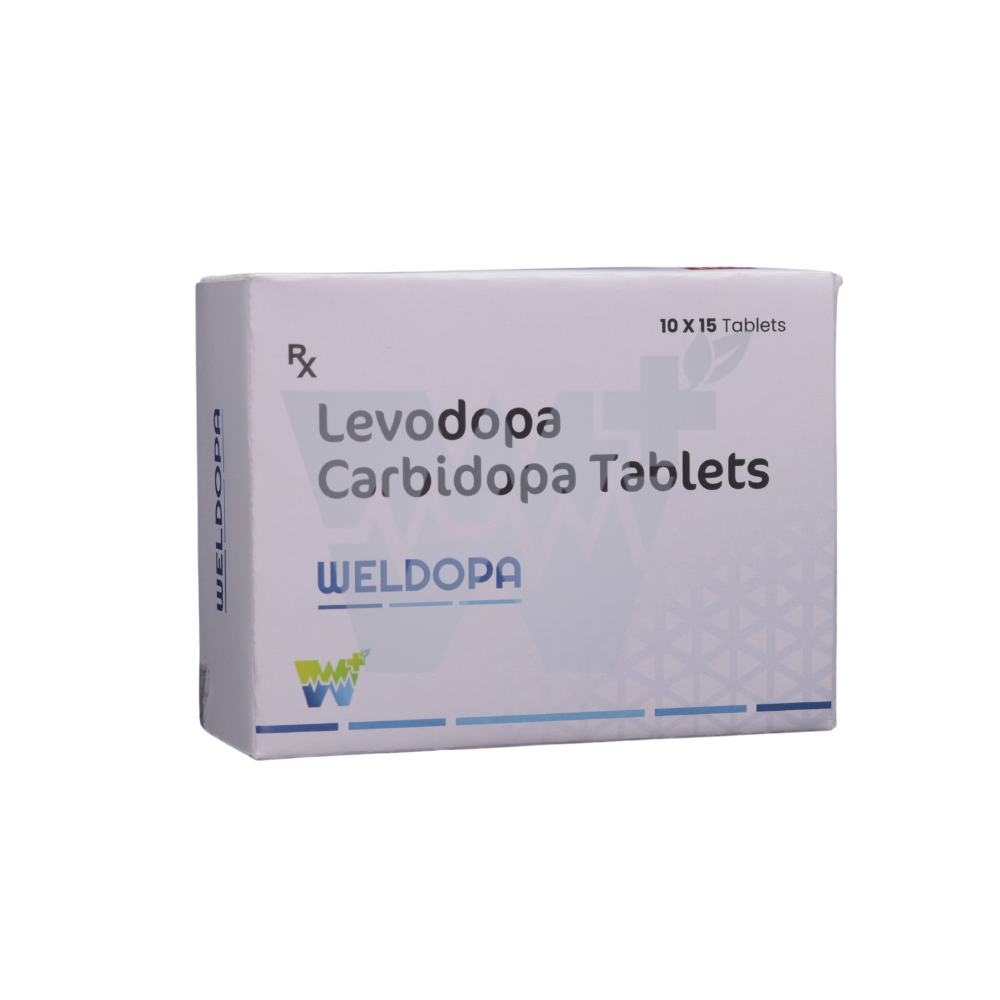



Introduction to Weldopa
Weldopa (Levodopa & Carbidopa Tablets) is a first-line therapy for Parkinson’s disease, designed to restore dopamine levels in the brain. It effectively reduces symptoms of Parkinsonism, such as tremors, rigidity, bradykinesia (slow movement), and postural instability. By combining Levodopa with Carbidopa, Weldopa offers enhanced efficacy with fewer gastrointestinal side effects, making it an essential treatment for patients with Parkinson’s disease and other dopamine-deficient disorders.
Uses of Weldopa
Treatment of Parkinson’s Disease
Management of Parkinsonian Symptoms in Neurodegenerative Disorders
Improves Motor Control, Rigidity, and Tremors
Reduces Freezing Episodes and Bradykinesia
Benefits of Weldopa
Enhances Dopamine Production in the Brain
Combination Therapy Ensures Maximum Drug Absorption
Minimizes Side Effects Such as Nausea and Vomiting
Improves Mobility, Coordination, and Quality of Life
Effective in Early and Advanced Stages of Parkinson’s Disease
Mechanism of Action of Weldopa
Levodopa is a dopamine precursor that crosses the blood-brain barrier and is converted into dopamine, restoring neurotransmitter balance in Parkinson’s patients. Carbidopa acts as a dopamine decarboxylase inhibitor, preventing Levodopa breakdown in the periphery, allowing more Levodopa to reach the brain. This dual-action mechanism enhances therapeutic effects while reducing side effects.